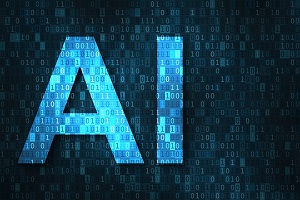Back in December 2017, Gartner conducted research that forecasted, “By 2020, 85% of CIOs will be piloting AI programs through a combination of buy, build, and outsource efforts.” However, as we kickoff 2021, the success rate of pilot programs remains low.
The frustratingly slow pace of implementation, in which projects take years to yield results, and very often fail, is hindering AI. A faster, more efficient approach is needed before we can fully enter the AI era. But the question remains, how can companies speed up their AI transformation?
Build Is the Default Option
If a company decides to pursue AI transformation through an in-house effort, one of the challenges is building an AI team. It can take a couple of years to build this kind of team as a core competency. Even then, the complexities of building real-world AI applications make the success rate low, usually resulting in negative ROI. And for the small percentage that do reach production, they don’t necessarily endure.
Building AI in-house means a long development cycle, with a longer time to value creation. According to the Harvard Business Review, “Most AI transformations take 18 to 36 months to complete, with some taking up to five years.”
There are, of course, some large corporations that have overcome these challenges. They have been able to dedicate the resources, teams and time to see AI use cases yield impactful ROI in the production stage. These organizations can be considered transformed from an AI perspective as their models are integrated within their internal processes and have already impacted their efficiency and effectiveness.
The Buy Option
In CIO, Maria Korolov noted, “It is becoming very clear that do-it-yourself will not work,” and cited ״a rise in off-the-shelf AI.”
There are many advantages to buying off-the-shelf AI software:
- Faster time-to-market by skipping the development stage
- No need for a large AI team as the off-the-shelf product can be installed and maintained without data scientists
- Less expensive as the product development cost is divided among other paying customers. Additionally, costs associated with a high failure rate are eliminated
- Higher resiliency due to a thorough testing phase, which includes numerous scenarios, data distributions and training data
However, “off-the-shelf” AI solutions have their own problems since they are not one-size-fits-all. Because different customers have varying data, constraints and decision-making processes, an AI solution that fits one customer will not necessarily fit another.
Data differs from one customer to another. The data scheme and structure of customers is likely designed differently with varying features, distributions and data types, while also having missing values at varying places.
Furthermore, different processes lead to different problem definitions. This means that predictions from the AI solution need to be adjusted to the individual decision process.
As an example, let’s look at the triage algorithm for hospitals during a pandemic. Some hospitals in certain countries admit every positive case, whereas others send patients to community treatment centers and only hospitalize severe cases. Or perhaps one hospital, with limited ventilators, needs to predict how soon patients will require a ventilator, while another hospital needs to understand ICU bed availability. This means that the AI solution will also need to be optimized to the exact target of each customer.
So, is there a way to reap the benefits of both methods, while limiting the disadvantages of each?
Customization: The New Method to Create Value with AI
Customization is another approach that has been introduced to the market. The customization method is an evolution of the buy method that combines some aspects of build. The supplier builds a platform, which is based on foundational AI elements that transcend specific solutions and industries. Customers can then leverage the platform so that, with small tweaks, it is tailored to meet their individual needs. The customization for each company is done separately, based on specific requirements, constraints and data. When deployed as an AI-as-a-Service solution, it’s possible to ensure that the solution will work in the long-term as data and requirements shift over time, while simplifying the implementation process for the customer.
This customization method is possible because there are often baseline commonalities when developing an AI solution for a problem that fits different customers. One of the major shared challenges in AI is stability in the production stage. While the lab environment is clean, static and almost free from requirements and unexpected events, AI systems in production are complex, and require a variety of different technologies and features in order to function correctly. There are core technologies that must be developed to create AI solutions that perform in production, such as technologies to handle extremely small amounts of labelled data, technologies to stabilize the system under the dynamicity of real-world data and technologies to meet regulations and create trust. These types of technologies must be integrated into an AI system to reach production and create any meaningful business value. After these technologies are built, there are capabilities that repeat themselves when solving different use cases, such as anomaly detection, text classification, image detection, speech recognition and more. Buying a solution that has already developed the right capabilities enables faster implementation.
A customized method, when built correctly to retrain the capabilities for customer data, needs and constraints, provides the required amount of flexibility. Parameters like compute time, data noisiness, supervision level, variety of the data distribution and many others, can be quickly and easily customized within the already robust algorithmic solution. As an example, AI-based visual inspection in manufacturing varies based on customer needs. While one customer will leverage AI to detect anomalies in the production, another will detect different types of predetermined defects.
Building, buying and customization all have benefits depending on an organization’s size, leadership and core product offerings. Regardless of which option you choose, to successfully implement AI over time, it is important that the same core platform is deployed across solutions, which allows it to become more robust and effective.
About the Author

Nurit Cohen Inger, VP of Products, BeyondMinds. Nurit defines and drives the product strategy and lifecycle of the company, along with developing and managing a strong team of product managers and designers. Bringing more than 22 years of experience in Information Systems, Nurit, the former Chief Data Officer in the IDF, has a track record in digital and data transformations, building AI solutions from ideation to production, innovation management, strategic planning, and software project management. Nurit has a M.S. in computer science focused on Artificial Intelligence from Bar Ilan University and a M.B.A from Tel Aviv University.
Sign up for the free insideBIGDATA newsletter.
Join us on Twitter: @InsideBigData1 – https://twitter.com/InsideBigData1





Speak Your Mind